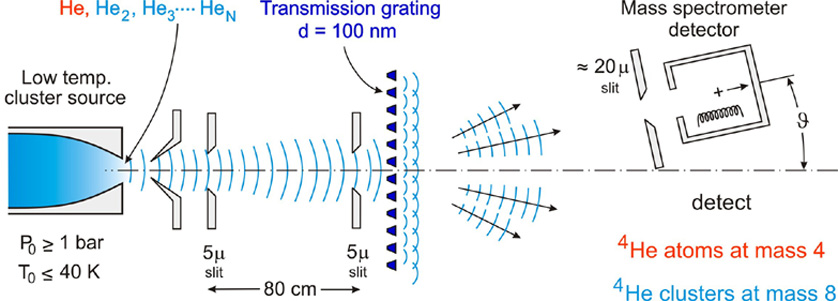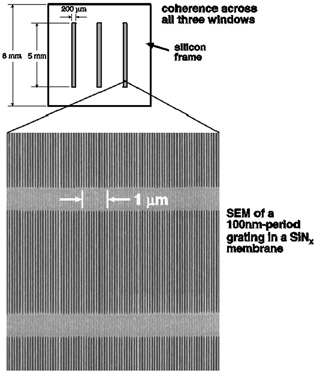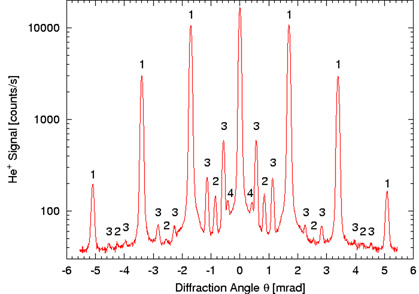
Helium Clusters |
|---|
DIFFRACTION OF ATOMS, MOLECULES AND CLUSTERS FROM NANO-TRANSMISSION GRATINGS
Diffraction of small helium clusters from transmission gratings
Quantum mechanics postulates the wave nature of atoms and molecules. Therefore phenomena known from experiments involving the wave nature of visible light, like diffraction and interference, can be observed in similar experiments with these particles. The wavelength of matter waves, λ, is determined according to de Broglie (1924) by the momentum, p = mv, of the respective particle with mass m and velocity vλ = h/p,
where h is Planck's constant.


